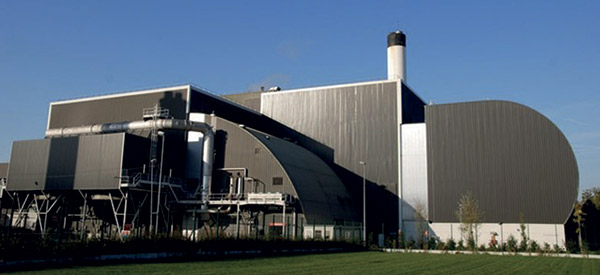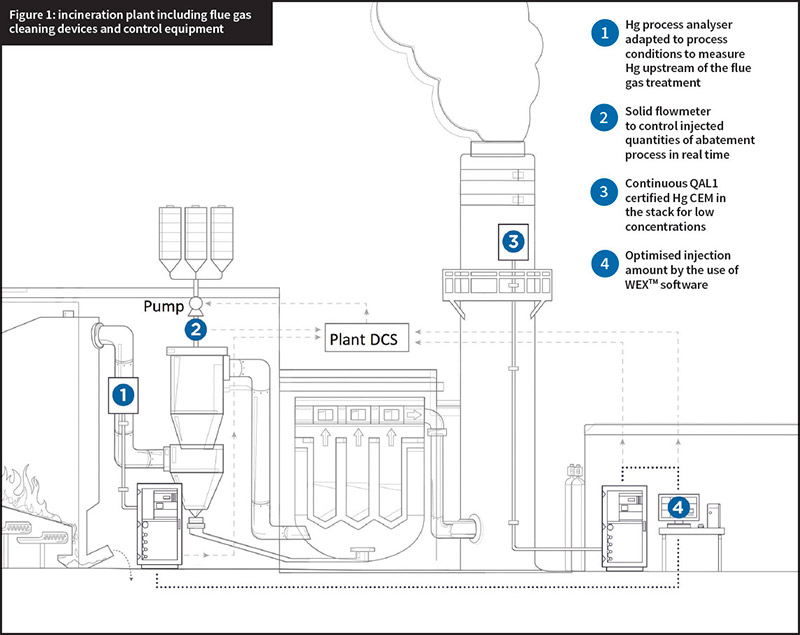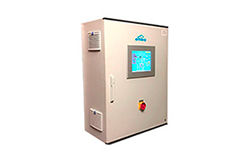

Normally cement kilns have to fulfil the requirements of large combustion plants. However, many cement kilns burn waste as a substitute for standard fuels and therefore, need to follow the requirements for waste incineration. As waste is an unknown mixture of inhomogeneous material, it is more difficult to prevent any Hg-emission peak, in comparison to burning coal. If only a Hg continuous emission monitor (CEM) is installed at the stack, then it is already too late for the process to react when a peak is detected. In this case, the complete flue gas cleaning device is already contaminated and it can take a long time until the Hg-concentration in the stack reaches a normal level.
A range of technologies to ensure low Hg emissions
As shown in Figure 1, four devices are required in this global solution:
- continuous measurement of Hg upstream of the flue gas treatment, by a specific Hg process analyser (SM-4 Raw gas) adapted to the process
conditions, allowing a very fast response over a wide concentration range of Hg. - continuous monitoring of abatement product injection rates with the SolidFlow 2.0 solid flowmeter, to control the injected quantities of abatement products in real time.
- continuous QAL1 certified Hg-CEM (SM-4) in the stack for low concentrations.
- optimisation of the injection amount, by the use of the WEXTM software, which calculates averages, trends and predictive averages.

